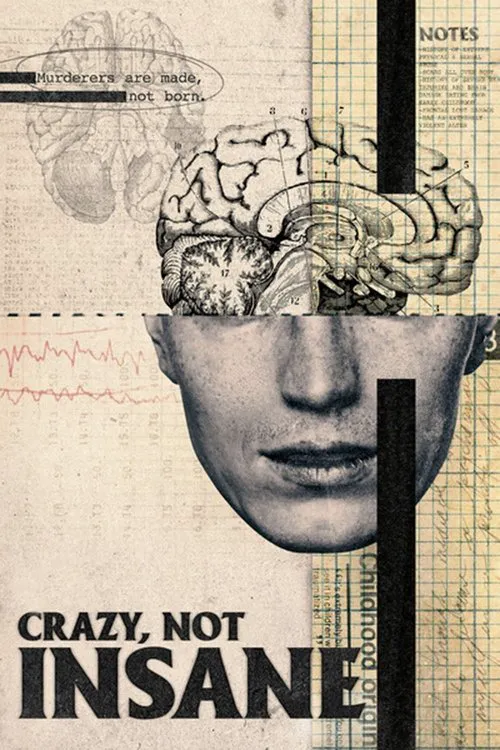Crazy, Not Insane

Plot
Crazy, Not Insane offers an immersive and thought-provoking look into the world of serial killers and the complexities behind their psychology. At its center is the fascinating figure of Dr. Dorothy Otnow Lewis, a renowned psychiatrist with an unyielding passion for understanding the intricacies of the human brain, specifically the darker aspects that give rise to violent tendencies. Dorothy's early life laid the groundwork for her future pursuits. As a young girl, she exhibited a profound interest in the workings of the human mind. This inquisitive nature led her to a career in psychology, where she began delving into the inner lives of various individuals, each with a distinct background and set of characteristics. Her ultimate goal was to distill a unified theory that defined the common denominators present among serial killers, an aim that set her apart from many of her peers. As Dr. Lewis embarked on her life's work, she encountered an array of cases that tested her convictions and challenged conventional wisdom. Some may attribute these violent behaviors to simple, instinctual drives. However, Dorothy remained convinced that the human psyche is far more complex, that what drives a person to commit unspeakable acts lies deep within a tangled web of experiences and emotions. She sought to separate the actions of a serial killer from the individual himself, searching for patterns that would shed light on the psychological mechanisms behind these destructive patterns of thought. One of the critical turning points in Dr. Lewis's research came when she began exploring the concept of multiple personality disorder, often referred to as dissociative identity disorder. In those afflicted by this condition, distinct personalities coexist within the same individual, some repressing memories while others are the dominant forces at play. These alternate personas or 'alters,' as they're called, often surface at specific moments, allowing the individual to cope with traumatic experiences. Dr. Lewis saw this phenomenon not merely as an aberration but as a gateway to understanding the fluid, ever-shifting landscape of the human mind. In her quest for deeper insights, Dorothy delved into various high-profile cases of serial killers, individuals such as Adam Walsh's murderer, Ottis Toole. Toole's own testimony - that an alternate personality was responsible for the crimes - further deepened Lewis's conviction in the concept of multiple personality disorder. His confession, along with her observation of this phenomenon in other cases, solidified her thesis. While exploring these dark corners of the human psyche, Dr. Lewis faced numerous challenges and debates. Colleagues often found her unconventional theories too radical, her approach too unorthodox. Critics argued that her research was flawed by her fascination with serial killers, that she was somehow drawn to these perpetrators due to her own darkness. However, for Dr. Lewis, her driving force was not the act of the serial killer but rather the individual behind it - the person who had chosen to succumb to the darker aspects of their psyche. In the film, Dr. Lewis's life work reaches a crescendo of sorts when she writes a seminal paper on the topic of multiple personality disorder and its relation to serial killing. Her findings challenge established thought, and the medical community begins to take notice. This validation offers Dr. Lewis a sense of vindication, knowing that her unwavering dedication has contributed to a greater understanding of the human mind. Ultimately, Crazy, Not Insane presents a poignant, thought-provoking reflection on the intricate dance between human psychology and the actions that unfold from it. With Dr. Dorothy Otnow Lewis at the forefront, the film navigates the treacherous landscape of the serial killer's mentality, probing the depths of a complex subject matter. Through her courageous pursuit of the truth, regardless of conventional wisdom or harsh criticism, the film underscores the profound significance of empathy and understanding in breaking down the mysteries of the human mind and the darkness that it can conceal.
Reviews
Recommendations




